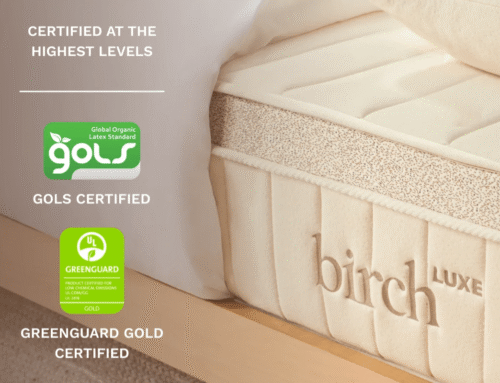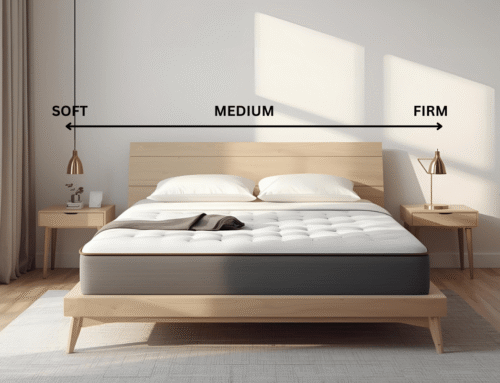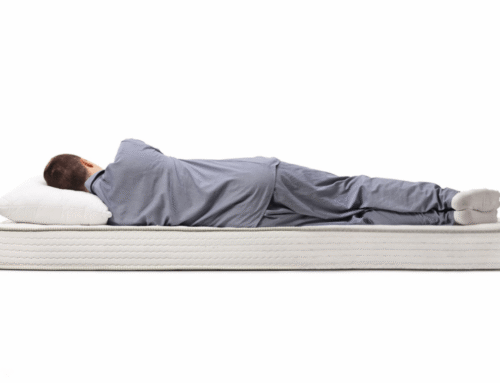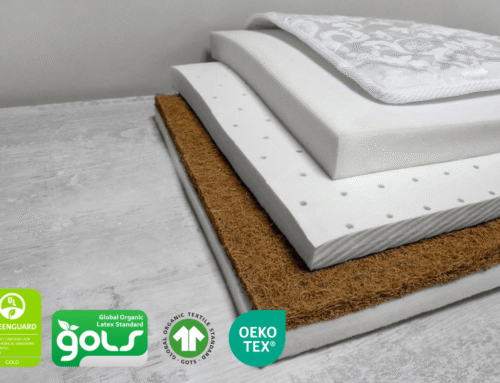A hybrid mattress combines coils for solid support with foam layers that cushion pressure points and provide many sleepers with a balanced feel. People often say hybrids are easier to move on than all-foam beds because the springs add some bounce and help maintain airflow at night.
Some sleepers find that hybrid mattresses transfer motion more than traditional memory foam, which could wake light sleepers if a partner shifts. Over time, the foam layers might sag or develop impressions, especially if the mattress doesn’t have a strong base or uses lower-quality materials. Hybrids also tend to be more expensive than basic innerspring models, which can make them unaffordable for some buyers.
Hybrid construction varies greatly by brand, so durability and comfort can differ even if two beds seem similar. The materials, coil types, and foam densities impact how long the mattress remains supportive and how it feels over time. In this post, we break down the key points buyers should know before choosing a hybrid to avoid surprises later on.
Key Takeaways
- Hybrid mattresses combine the support of coils with soft foam layers, which make them ideal for combo sleepers who need both bounce and pressure relief.
- These mattresses often stay cooler than all-foam beds because the coils allow airflow, and some feature gel-infused or breathable top layers for added temperature control.
- Hybrids are great for couples, though motion transfer can still occur if the foam quality or coil design isn’t high-grade.
- They tend to be heavier and more expensive than basic models, so budget-conscious buyers should weigh cost against long-term comfort.
- Durability varies by brand, so check coil types, foam density, and warranty details to avoid early sagging or discomfort.
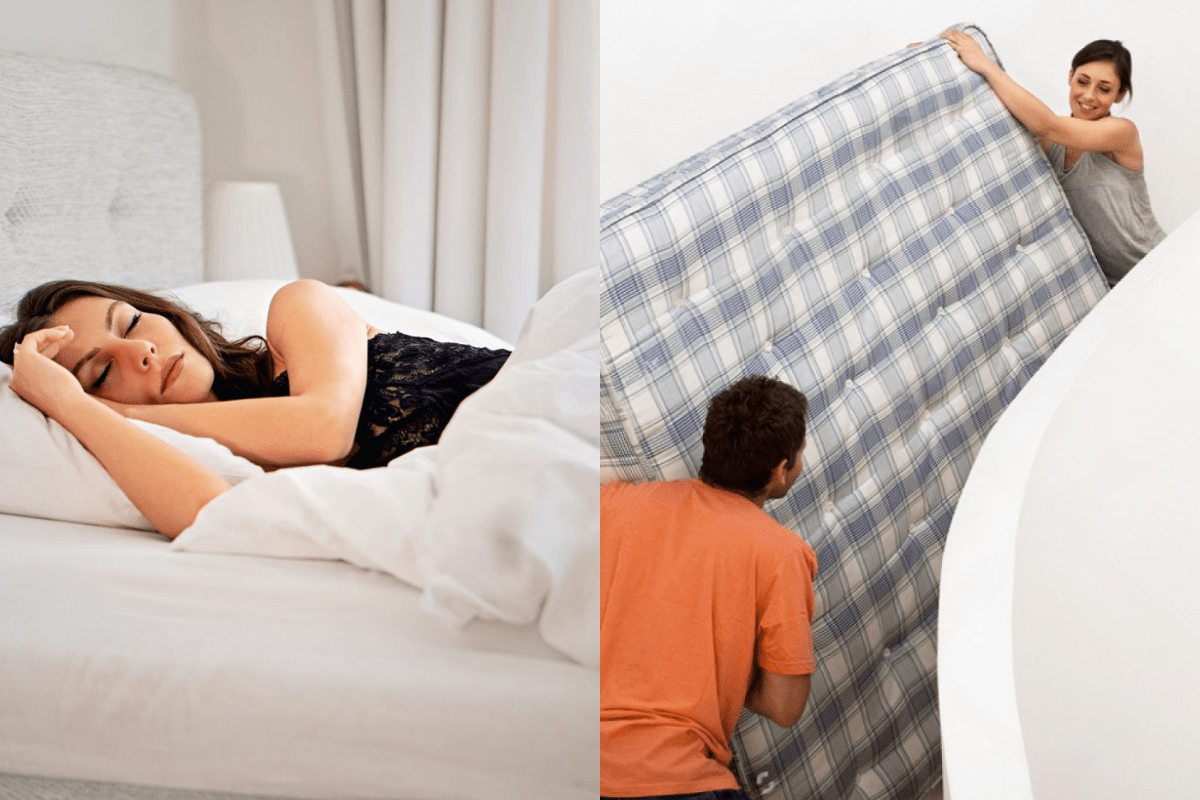
What Is a Hybrid Mattress?
A hybrid mattress combines a coil spring base with one or more layers of foam, latex, or gel. The coil system provides solid support, while the foam or latex layers provide cushioning and comfort. This blend aims to balance firmness and softness for a wide range of sleepers.
Typically, hybrid mattresses include memory foam or latex in the upper layers. Some models add cooling gel to help maintain a comfortable sleeping temperature throughout the night. The combination works to support proper spinal alignment and reduce pressure points. This type of mattress offers a mix of responsiveness and contouring. The coils add a subtle bounce and durability, while the foam layers provide softness without sinking too deeply. Hybrids can suit those who want support from an innerspring mattress but prefer the feel of foam on top.
The difference between gel memory foam and hybrid mattress depends on the construction. Gel memory foam mattresses focus mainly on cooling and contouring with layers of gel-infused foam, whereas hybrid mattresses combine this foam comfort with a supportive coil base to deliver both pressure relief and a more responsive sleeping surface.
Pro: Balanced Support and Comfort
Hybrids provide a balanced mix of support and comfort that many appreciate. The coil system maintains proper spinal alignment and delivers dependable support. Meanwhile, the foam layers soften key areas like the shoulders, hips, and lower back to ease pressure points.
Many people notice hybrids adjust well to different sleeping positions without sacrificing comfort or support, and the design encourages airflow for better temperature control throughout the night. This breathability helps sleepers stay cool and wake up feeling more refreshed.
This combination suits those who find memory foam too enveloping or innerspring beds too firm. People comparing hybrid and memory foam mattresses for back pain or weighing hybrid and memory foam options find this balanced feel ideal for their needs.
Pro: Good for Couples
Hybrid mattresses work well for couples due to their ability to minimize motion transfer. The combination of coils and foam layers helps absorb movement and reduces the chances of being disturbed by a partner’s tossing or turning. This quality is especially noticeable in hybrids with thicker foam layers.
Edge support in hybrid mattresses are reliable, allowing both partners to enjoy the full sleeping surface without worrying about rolling off. The reinforced edges provide stability and help maintain the mattress shape over time. This feature adds to the overall comfort and usability for two sleepers.
In addition, hybrids balance support and pressure relief, which can benefit couples with different sleep preferences. The coils offer a responsive base, while the foam layers provide cushioning where needed. This blend helps accommodate varied sleeping styles without sacrificing comfort.

Pro: Better Airflow and Cooling
Hybrid mattresses provide better airflow because of their coil support layers, which allow air to circulate more freely than traditional memory foam. This ventilation reduces heat buildup and creates a cooler sleeping surface overall. Many hybrids also come with breathable covers or gel-infused foam layers that help control temperature.
Memory foam tends to trap heat due to its dense construction, making it uncomfortable for those who sleep hot. In contrast, the mix of coils and cooling materials in hybrids offers a more balanced feel that helps regulate temperature during the night. This feature is beneficial for sleepers who struggle with overheating on all-foam mattresses.
Besides airflow, the hybrid design addresses common heat buildup issues that affect sleep quality. Using materials that encourage breathability and temperature control often leads to a noticeably cooler experience. For many, this provides a useful option for staying comfortable on warmer nights.
Con: Heavier and Harder to Move
Hybrid mattresses combine coils and foam, which increase their weight compared to all-foam or innerspring models. This extra weight makes moving or rotating the mattress into a more demanding task. Larger sizes like queen or king add to the challenge and require more effort during setup or repositioning.
Handling a heavy mattress can quickly become inconvenient, especially for those who prefer to rearrange their bedroom frequently. It’s common to need assistance, as the bulk and weight don’t lend themselves well to solo moving. This can be a disadvantage for people living alone or in smaller spaces.
Frequent moves or regular mattress rotations might feel like a hassle with a hybrid model. The combination of materials, while supportive, results in a mattress that demands more care during handling. This makes planning ahead and asking for help a practical approach, and considering the weight of a hybrid mattress, moving a hybrid mattress safely and easily, and compressing it for transport helps avoid unnecessary strain.
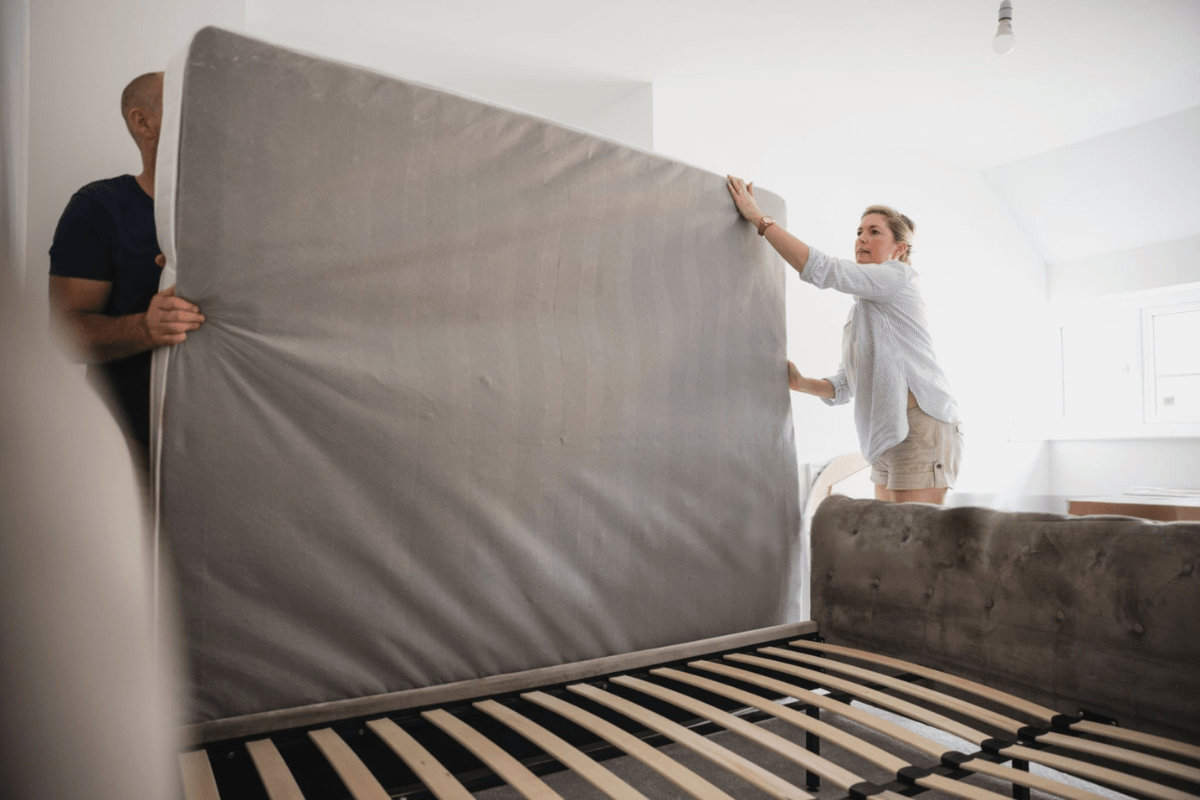
Con: More Expensive Than Basic Models
Hybrids usually come with a higher price compared to basic innerspring or budget foam mattresses. This is because they combine multiple layers and use more complex construction techniques, which naturally raise the cost. The extra materials and design features require more resources and craftsmanship.
Many sleepers appreciate the balance of comfort and support that hybrids offer, feeling that the added expense translates into better rest. However, not everyone may notice a significant difference depending on their sleeping style or preferences. For some, a simpler mattress might provide adequate comfort without stretching the budget.
Cost can be a deciding factor for those trying to stay within a set spending limit. Considering personal needs and priorities helps in choosing a mattress that fits both comfort expectations and financial plans. Sometimes, a basic model covers the essentials well enough without overspending.
Con: Foam May Break Down Faster
Before buying a mattress, the sleeping position plays an important role in comfort. Side sleepers prefer the way hybrids contour the body for pressure relief. Those who sleep on their back or stomach tend to benefit from firmer support to maintain spinal alignment.
The type of foam used also influences durability and temperature regulation. Latex generally lasts longer and offers a cooler sleep compared to memory foam, though it usually comes at a higher price. Memory foam can still provide good comfort but may retain more heat over time.
Coil count and quality affect how well a mattress supports the body and reduces motion transfer. Mattresses with a higher number of pocketed coils tend to offer better support and isolate movement more effectively than those with open coils. A comprehensive warranty suggests confidence in the product, while brief or limited coverage may signal caution.
Are Hybrid Mattresses Worth It?
Hybrid mattresses provide a balanced combination of comfort and support that appeals to a wide range of sleepers. They usually include layers of foam for cushioning alongside coils that add responsiveness. This blend helps relieve pressure points without the deep sink that full memory foam sometimes causes.
Despite their benefits, hybrids come with some drawbacks. The price tends to be higher compared to traditional mattresses, and their construction can make them heavier and harder to move. Additionally, not all hybrid models maintain their quality over time. Cheaper versions may sag or lose support sooner than expected.
For those prioritizing both comfort and durability, hybrid mattresses are a reasonable option, yet considering individual sleep preferences and budget remains important. Before buying, it helps to weigh whether innerspring or hybrid mattresses provide greater benefits, whether memory foam or hybrid mattresses last longer, and the expected lifespan of hybrid mattresses, since researching specific brands and reading user reviews reveals which hybrids hold up best in real-life use.
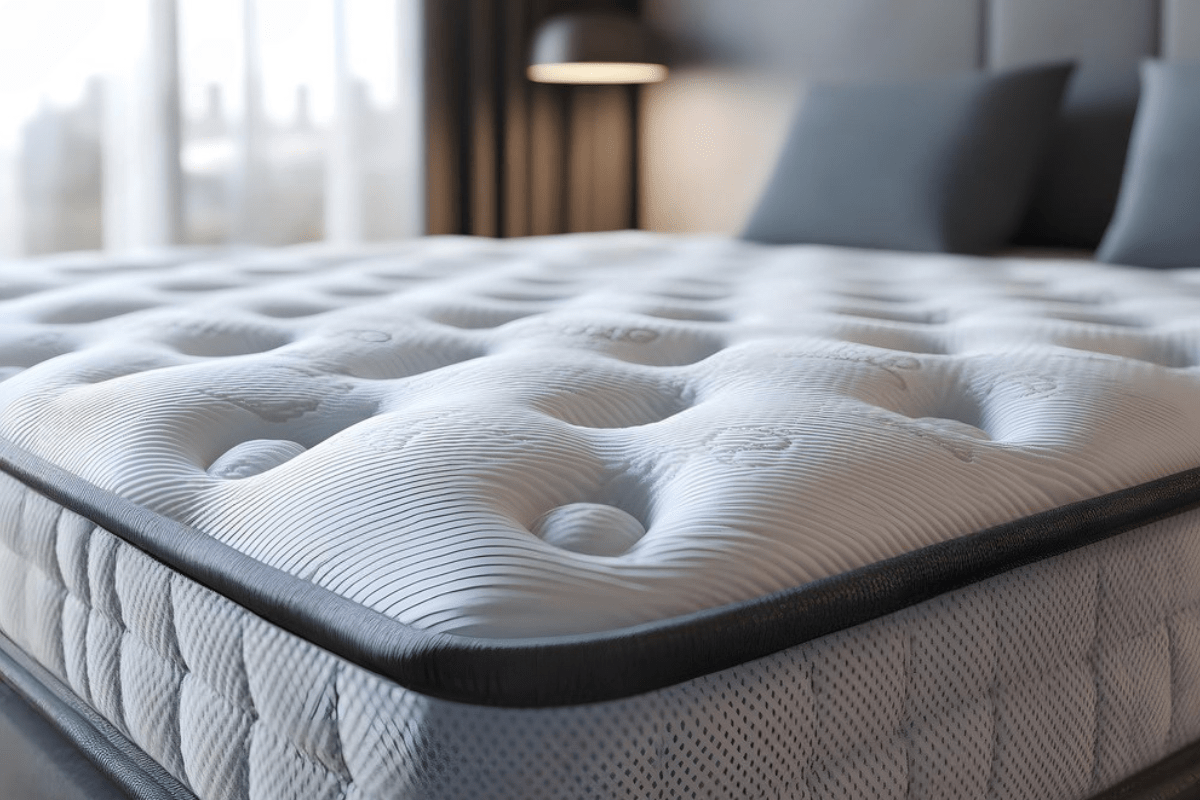
Who Should Buy a Hybrid Mattress?
Hybrid mattresses suit sleepers who switch positions during the night. The combination of innerspring coils and foam layers provides a balance between firm support and gentle cushioning. This design accommodates various sleeping styles without feeling too stiff or too soft.
Couples prefer hybrid mattresses because they reduce motion transfer. The coils provide responsiveness, and the foam layers absorb movement to minimize disturbances. Additionally, hybrids allow better airflow than all-foam beds, which helps those who sleep hot.
Durability is important in choosing a hybrid mattress since quality materials hold up well over time. The combination of coils and foam offers lasting comfort without sagging quickly. For buyers focused on getting good use from their investment, hybrids deliver steady support for years.
Final Thoughts
Hybrid mattresses blend features of memory foam and innerspring beds and aim to provide a balance of comfort and support. They offer pressure relief alongside some bounce, which appeals to many sleepers. However, quality varies significantly across different models.
Transparency about materials is important in the overall experience. Mattresses that use durable foams and reliable coil systems tend to hold up better over time. Avoid products with cheap polyfoam layers to prevent early sagging or discomfort.
Overall, a carefully selected hybrid mattress can deliver consistent comfort and support for various sleep positions. It suits those who want a combination of contouring and responsiveness. Yet, thorough research helps to find one that meets personal needs and preferences.
Considering the need for a box spring, the time required for the mattress to fully expand and break in, along with the effects of sleeping on it too soon, can impact the overall experience. The length of time a mattress can stay compressed in the box also matters. Proper maintenance includes cleaning and regularly rotating the mattress to preserve comfort and extend durability.

